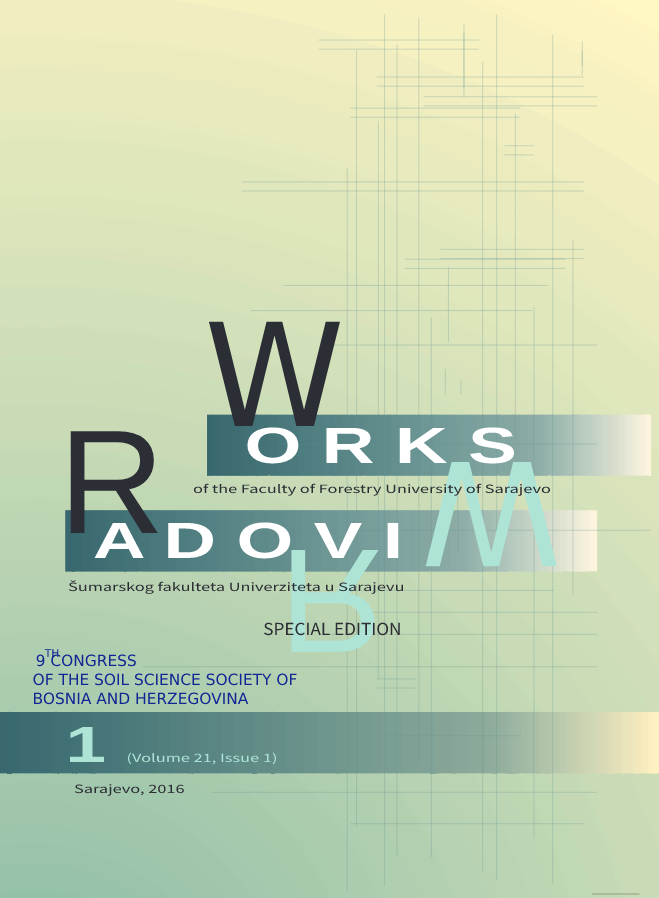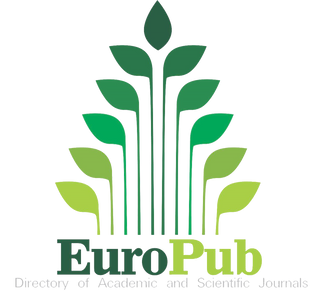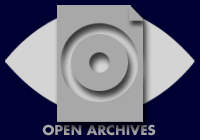SOILS WITHIN THE POST-2015 SUSTAINABLE DEVELOPMENT AGENDA
DOI:
https://doi.org/10.54652/rsf.2016.v1.i1.280Ključne riječi:
soils, political advocacy, sustainable development goals, UNCCD, UNCBD, UNFCCCSažetak
UDK 631.4:502.1
Soils are considered across the Rio Conventions and while some advances have been made in the past two decades, implementation remains lacking and soil-related issues persist. This calls for a more integrated approach for the implementation of the Conventions. Similarly, soils will play a key role to achieve the post-2015 development agenda and can be found across the proposed Sustainable Development Goals (SDGs). This cross-cutting role is not being sufficiently acknowledged in the negotiations. Putting soils on the policy agenda will depend on a major shift in the discussion to recognize that soils underpin a wide range of services and should, therefore, be protected for future generations. Concerted efforts for advocacy within the post-2015 development agenda need to focus on keeping soils on the agenda and on making proposals for the effective implementation and monitoring of the SDGs.
Downloads
References
FAO: The State of the World's Land and Water Resources for Food and Agriculture. FAO, 2011, Rome. Major new assessment of the available land and water resources for global food production, including projections of resource needs for projected global population increase.
United Nations (UN). (2012). “The Future We Want.” UN, A/RES/66/288 annex to resolution 66/288 of the UN General Assembly 27 July 2012. 40 pp.
UNITED NATIONS (2014). The Road to Dignity by 2030: Ending Poverty, Transforming All Lives and Protecting the Planet. Synthesis Report of the Secretary-General on the Post-2015 Agenda, 2014, New York. 4-6pp.
The World Conservation Union - IUCN (2002) Legal and Institutional Frameworks for Sustainable Soils: A Preliminary Report. IUCN Environmental Policy and Law Paper No. 45. 2002.
Wyatt, A. (2008), The Dirt on International Environmental Law Regarding Soils: Is the Existing Regime Adequate?, 19 Duke Environmental Law & Policy Forum 165-208. Provides an overview of soils in the Rio Conventions and explores the option of creating a convention for soils.
Stockmann, U., Adams, M.A., Crawford, J.W., Field, D.J., Henakaarchchi, N., Jenkins, M., Minasny, B., McBratney, A.B., Courcelles, V.d.R.d., Singh, K., Wheeler, I., Abbott, L., Angers, D.A., Baldock, J., Bird, M., Brookes, P.C., Chenu, C., Jastrow, J.D., Lal, R., Lehmann, J.,O’Donnell, A.G., Parton, W.J., Whitehead,
D., Zimmermann, M., 2013. The knowns, known unknowns and unknowns of sequestration of soil organic carbon. Agriculture, Ecosystems & Environment 164(0), 80-99.
Schlesinger, W.H. (1995). An overview of the global carbon cycle. In: Lal R, Kimble J, Levine E, Stewart BA (eds) Soils and global change. Lewis, Boca Raton, Florida, pp 9–25.
Smith, P. (2012). Soils and climate change. Current Opinion in Environmental Sustainability 2012, 4:1–6.
Lal, R. (2013). 3rd Global Soil Week, 19-23. April, 2013 Soils and the Carbon Cycle in Relation to Climate Change. Presentation at 2nd Global Soil Week, 27-
October 2013, Berlin, Germany. 52pp. http://globalsoilweek.org/
United Nations Framework Convention on Climate Change – UNFCCC (1992), Convention on climate change. http://unfccc.int/files/essential_background/ background _ publications_htmlpdf/application/pdf/conveng.pdf
IPCC, 2014: Climate Change (2014), Mitigation of Climate Change. Contribution of Working Group III to the Fifth Assessment Report of the Intergovernmental Panel on Climate Change [Edenhofer, O., R. Pichs-Madruga, Y. Sokona, E. Farahani, S. Kadner, K. Seyboth, A. Adler, I. Baum, S. Brunner, P. Eickemeier B. Kriemann, J. Savolainen, S. Schlömer, C. von Stechow, T. Zwickel and J.C. Minx (eds.)]. Cambridge University Press, Cambridge, United Kingdom and New York, NY, USA. 67 pp.
FAO (2014): Towards climate-responsible peatland management. FAO, 2014, Rome, Italy.
Jones, A., V. Stolbovoy, C. Tarnocai, G. Broll, O. Spaargaren and L. Montanarella (eds.), 2010, Soil Atlas of the Northern Circumpolar Region. European Commission, Office for Official Publications of the European Communities, Luxembourg. 142 pp.
Tarnocai, C., Canadell, J.G., Schuur, E.A.G., Kuhry, P., Mazhitova, G., Zimov, S. 2009. Soil organic carbon pools in the northern circumpolar permafrost region, Global Biogeochemical Cycles, 23 (2): GB2023.
Kyoto Protocol to the United Nations Framework Convention on Climate Change (1997), UN Doc FCCC/CP/1997/7/Add.1, Dec. 10, 1997; 37 ILM 22 (1998). http://unfccc.int/resource/docs/convkp/kpeng.pdf.
Giddens, A. (2009), The politics of climate change: Polity. ISBN 9780745646930.
Dessler, A, E; Parson, E. (2010), The science and politics of global climate change: a guide to the debate: Cambridge University Press. ISBN 9780521737401.
Dominati, E., Patterson, M. and Mackay, A. (2010). ‘A Framework for Classifying and Quantifying the Natural Capital and Ecosystem Services for Soils’, Ecological Economics, 69, pp. 1858–1868.
United Nations Convention on Biological Diversity - CBD (1992), 1760 U.N.T.S. 79 Convention Text. Available online at http://www.cbd.int/doc/legal/cbd-en.pdf, accessed on 07.01.14. 3pp., text article 6a, (last visited 07.01.2014).
(Jeffery, S.; Gardi, C.; Jones, A.; Montanarella, L.; Marmo, L.; Miko, L.; Ritz, K.; Peres, G.; Römbke, J.; van der Putten, W. H. (eds); European Atlas of Soil Biodiversity. 2010; European Commission, Publications Office of the European Union, Luxembourg. Main reference work advocating the need to consider the large biodiversity pool existing below ground, not only in Europe but also at global scale.
(Bello H. S., Isa T., Isa M. A. and Akinmuisere K (2013): Effects of Land Use on the Nature and Populations of Microorganisms in the Semi-Arid Region of North- Eastern Nigeria. International Journal of Environment. Vol. 2.1. Sep-Nov 2013.
European Commission (2001): The Soil Protection Communication – DG ENV Draft October 2001.http://www.ehu.eus/europeanclass2003/soilpaper.pdf
European Commission: Thematic strategy for soil protection. COM (2006) 0231 Final. Commission of the European Communities, Brussels; 2006.
GSBI (2012), White Paper on the First Open Meeting of the Global Soil Biodiversity Initiative (GSBI) Held in London, England, 30 March 2012, available at http://www.globalsoilbiodiversity.org/sites/default/files/WhitePaper_London201 2.pdf
United Nations Convention on Biological Diversity - CBD COP 10 Decision X/2 (2010), Strategic Plan for Biodiversity 2011-2020
United Nations (1994): United Nations convention to combat desertification in those countries experiencing serious drought and/or desertification, particularly in Africa – final text of the convention. 1994, UNCCD, Bonn, Germany.
Millennium Ecosystem Assessment, 2005a. Ecosystems and Human Well-being, vol 1. Current State and Trends: Findings of the Condition and Trends Working Millennium Ecosystem Assessment Series. Dryland Systems, Chapter 22, p. 815.
United Nations Convention to Combat Desertification (UNCCD) Policy Brief; Zero Net Land Degradation. 2012, Bonn, Germany. New initiative by UNCCD aiming towards setting a quantitative Sustainable Development Goal of zero net land degradation for discussion in the Rio+20 summit.
Chasek, P., et al., Operationalizing Zero Net Land Degradation: The next stage in international efforts to combat desertification?, Journal of Arid Environments (2014), http://dx.doi.org/10.1016/j.jaridenv.2014.05.020.
United Nations Convention to Combat Desertification – UNCCD COP (11)/19 Report on activities supporting the United Nations Decade for Deserts and the Fight against Desertification (2010–2020) http://www.unccd.int/Lists/ OfficialDocuments/cop11/19 eng.pdf UNCCD COP11 decision to establish an intergovernmental working group to: (1) establish a science-based definition of land degradation neutrality in arid, semi-arid and dry sub-humid areas; (2) develop options relating to arid, semi-arid and dry sub-humid areas that Parties might consider should they strive to achieve land degradation neutrality; and (3) advise the Convention on the implications for its current and future strategy, programmes and the resource requirements.
Thomas R.J., M. Akhtar-Schuster, L.C. Stringer, M.J. Marques, R. Escadafal,E. Abraham, G. Enne: Fertile ground? Options for a science–policy platform for land. Review Article Environmental Science & Policy, Volume 16, February (2012), Pages 122-135.There is a gap in science-policy advice concerning land and soil at global scale. The main UN Convention dealing with this environmental compartment, the UNCCD, lacks adequate scientific advisory bodies to deliver the needed high level scientific advice and guidance. It is advocated the creation of a body similar to an Intergovernmental Panel on Soils (Land).
United Nations (2013), Lessons Learned from MDG Monitoring From a Statistical Perspective Report of the Task Team on Lessons Learned from MDG Monitoring of the IAEG-MD. 2pp.
United Nations (2013), A New Global Partnership: Eradicate Poverty and Transform Economies Through Sustainable Development The Report of the High- Level Panel of Eminent Persons on the Post-2015 Development Agenda. 1-5pp.
Hunter, D; Salzman J. & Zaelke, D. (1991), Soft Law and the International Law of the Environment, 12 MICH. J. INT’L L. 420, 430. At 357 (citing Pierre-Marie Dupuy).
Hurni H, Giger M, and Meyer K (eds).: Soils on the global agenda. Developing international mechanisms for sustainable land management. Prepared with the support of an international group of specialists of the IASUS Working Group of the International Union of Soil Sciences (IUSS). 2006; Centre for Development and Environment, Bern, 64 pp.
Open Working Group on the Sustainable Development Goals. Outcome Document (2014). Published on 19 July 2014. United Nations.
European Comission (2014), Communication from the Commission to the European Parliament, the Council, the European Economic and Social Committee and the Committee of the Regions a Decent Life for all: from vision to collective action. COM (2014) 335 final. Brussels, 2.6.2014. 10pp.
Ehlers, K., Lobos Alva, I., Montanarella, L. et al. (2013), Soils and Land in the SDGs and the Post-2015 Development Agenda: A proposal for a goal to achieve a Land Degradation Neutral World in the context of sustainable development. Available online at: http://globalsoilweek.org/thematic-areas/sustainable-development- goals/soil-and-land-in-the-post-2015-development-agenda, Last visited 09.01.2014.
UNCCD (2013), News item of 06/09/2013: Iceland and Namibia Launch Group of Friends on Desertification http://www.unccd.int/en/mediacenter/MediaNews/ Pages/ highlightdetail.aspx?HighlightID=222, visited 09.01.2015.
SERI (2011), EUROPE’S GLOBAL LAND DEMAND: A study on the actual land embodied in European imports and exports of agricultural and forestry products. http://seri.at/
Kretschmer, B, Allen, B, Kieve, D, Smith, C. (2013). The sustainability of advanced biofuels in the EU: Assessing the sustainability of wastes, residues and other feedstocks set out in the European Commission’s proposal on Indirect Land Use Change (ILUC). Biofuel ExChange briefing No 3. Institute for European Environmental Policy (IEEP), London.
Bouma, J. 2014. Soil science contributions towards Sustainable Development Goals and their implementation: linking soil functions with ecosystem services. J.Plant Nutrition and Soil Sci. 177 (2): 111-120.
Bouma, J., 2015. Engaging soil science in transdisciplinary research facing wicked problems in the information society. Soil Sci.Soc.Amer.J. 79: 454- 458.(doi:10.2136/ sssaj2014.11.0470).
Bouma, J., C.Kwakernaak, A.Bonfante, J.J. Stoorvogel and L.W. Dekker. 2015. Soil science input in Transdisciplinary projects in the Netherlands and Italy. Geoderma Regional 5,96-105. (http://dx.doi.org/10.1016/j.geodrs.2015.04.002).
Press release ‘Contribution de l’agriculture à la lutte contre le changement climatique: Stéphane Le Foll annonce le lancement d’un projet de recherche international: le «4 pour 1000». MAAF, Paris, March 17, 2015. http://agriculture.gouv.fr/Cop21-le-4-pour-1000























